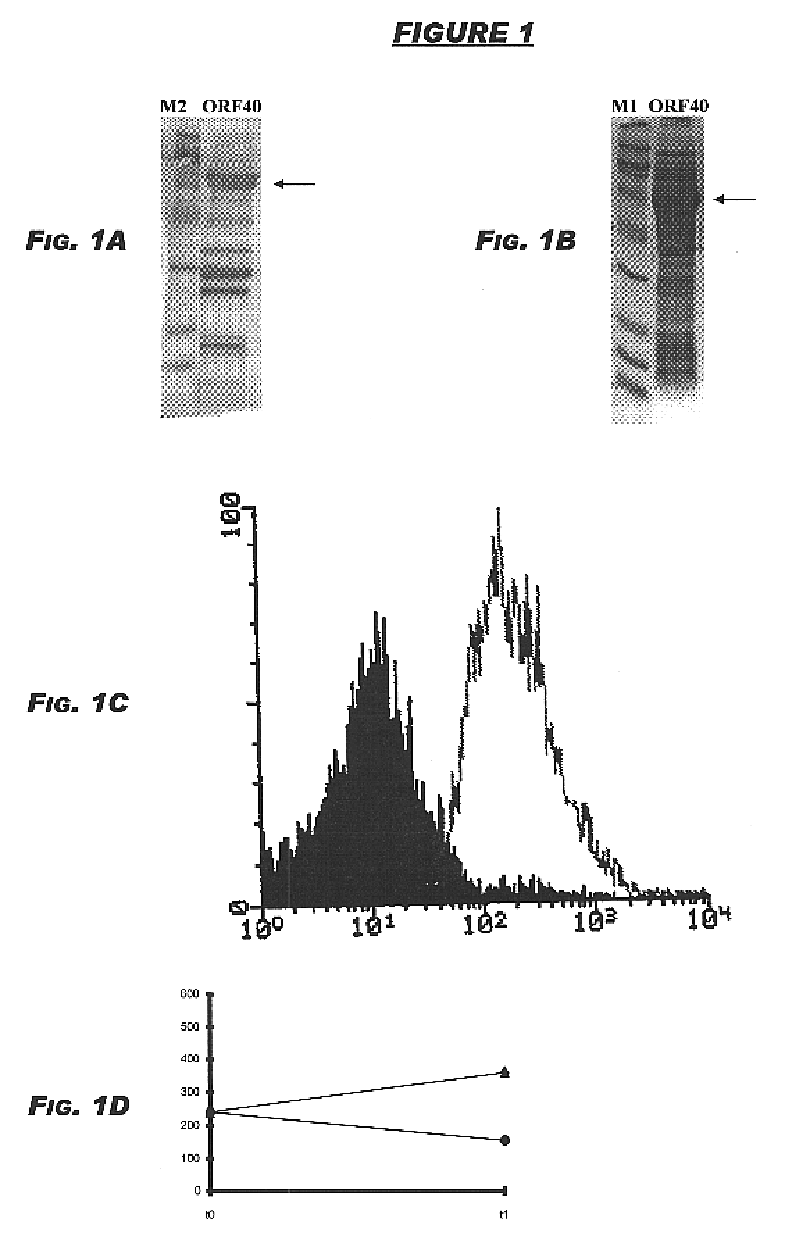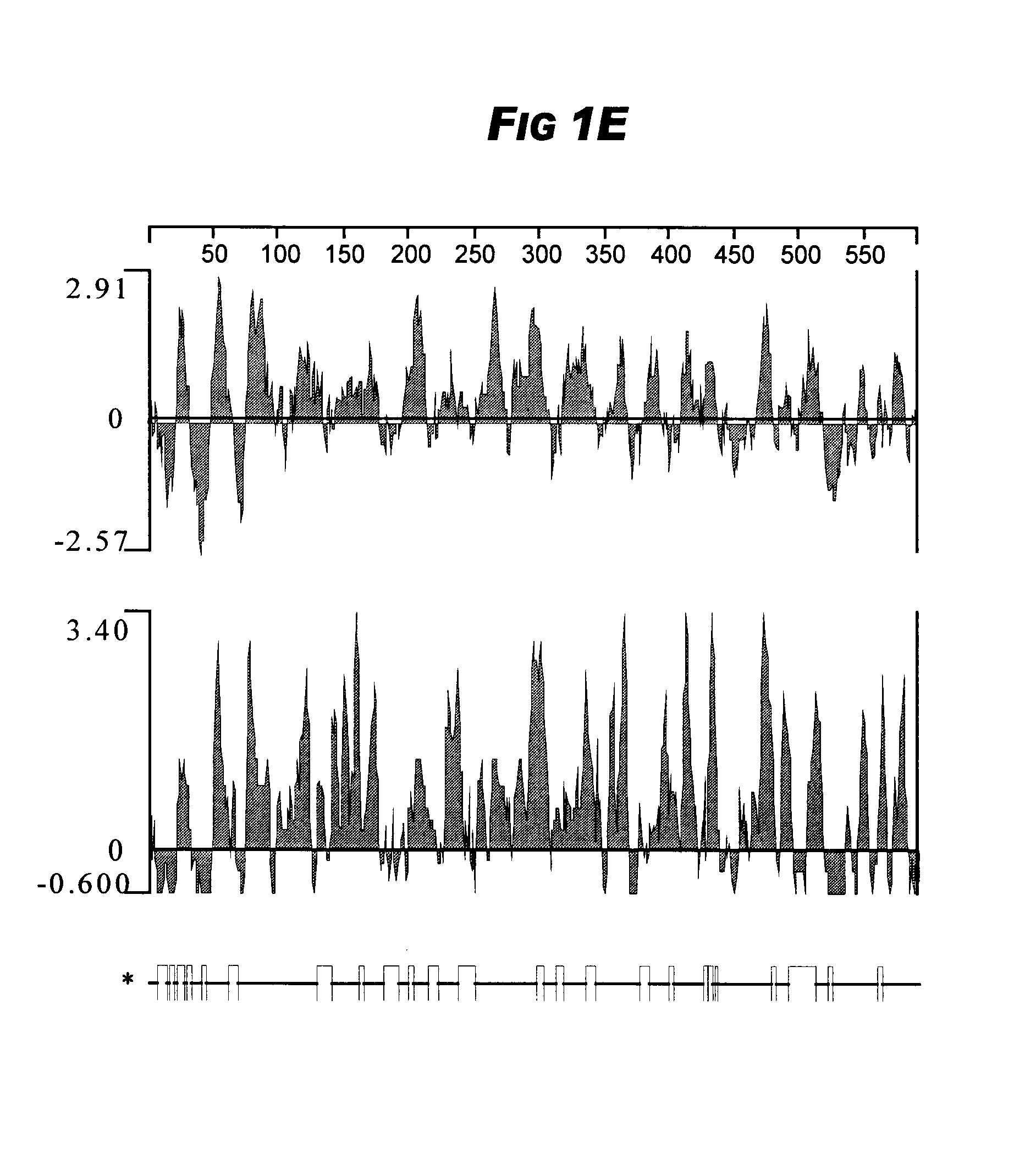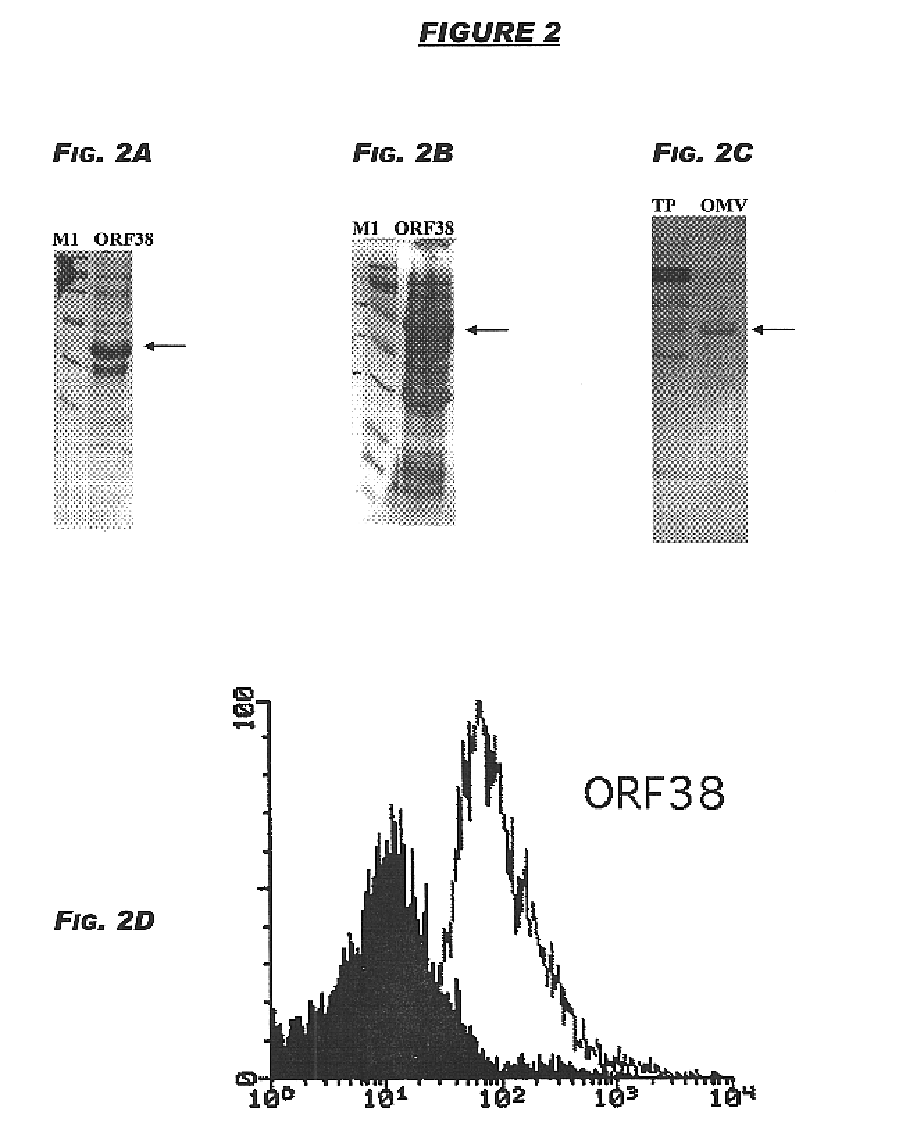Meningococcal antigens
a technology of meningococcal and antigen, applied in the field of meningococcal antigen, can solve the problems of inability to use in infants, meningococcal b remains a problem, and the immune response is poor, and achieves the effect of efficient harvesting and convenient purification of recombinant proteins
- Summary
- Abstract
- Description
- Claims
- Application Information
AI Technical Summary
Benefits of technology
Problems solved by technology
Method used
Image
Examples
example 1
The following partial DNA sequence was identified in N.meningitidis :
This corresponds to the amino acid sequence :
Further work revealed the complete DNA sequence :
This corresponds to the amino acid sequence :
Further work identified the corresponding gene in strain A of N.meningilidis :
This encodes a protein having amino acid sequence :
The originally-identified partial strain B sequence (ORF40 (SEQ ID NO:2)) shows 65.7% identity over a 254aa overlap with ORF40a (SEQ ID NO:138):
The complete strain B sequence (ORF40-1 (SEQ ID NO:4)) and ORF40a (SEQ ID NO:6) show 83.7% identity in 601 aa overlap:
Computer analysis of these two amino acid sequences gave the following results:
Homology With Hsf Protein Encoded by the Type b Surface Fibrils Locus of H.influenzae (Accession Number U41852)
ORF40 (SEQ ID NO:2) and Hsf protein (SEQ ID NO:139) show 54% aa identity (SEQ ID NO:140) in 251 aa overlap:
ORF40a also shows homology to Hsf:
Based on homology with Hsf, it was predicted that this protein from...
example 2
The following partial DNA sequence was identified in N.meningitidis
This corresponds to the amino acid sequence :
Further work revealed the complete nucleotide sequence :
This corresponds to the amino acid sequence :
Computer analysis of this amino acid sequence reveals a putative prokaryotic membrane lipoprotein lipid attachment site (underlined).
Further work identified the corresponding gene in strain A of N.meningitidis :
This encodes a protein having amino acid sequence :
The originally-identified partial strain B sequence (ORF38 (SEQ ID NO:8)) shows 95.2% identity over a 165aa overlap with ORF38a (SEQ ID NO:159):
The complete strain B sequence (ORF38-1 (SEQ ID NO: 10)) and OR38a (SEQ ID NO: 12) show 98.4% identity in 321 aa overlap:
Computer analysis of these sequences revealed the following:
Homology With a Lipoprotein (Lipo) of C.jejuni (Accession Number X82427)
ORF38 (SEQ ID NO:160) and lipo (SEQ ID NO:162) show 38% aa identity (SEQ ID NO:161) in 96 aa overlap:
Based on this analysis,...
example 3
The following N.meningitidis DNA sequence was identified :
This corresponds to the amino acid sequence :
Computer analysis of this amino acid sequence predicted the leader peptide shown underlined.
Further work identified the corresponding gene in strain A of N.meningitidis :
This encodes a protein having amino acid sequence :
The strain B sequence (ORF44 (SEQ ID NO: 14)) shows 99.2% identity over a 124aa overlap with ORF44a (SEQ ID NO:16):
Computer analysis gave the following results:
Homology With the LecA Adhesin of Eikenella corrodens (Accession Number D78153)
ORF44 (SEQ ID NO:163) and LecA (SEQ ID NO:165) protein show 45% aa identity (SEQ ID NO: 164) in 91 aa overlap:
Based on homology with the adhesin, it was predicted that this protein from N.meningitidis, and its epitopes, could be useful antigens for vaccines or diagnostics.
ORF44-4 (11.2 kDa) was cloned in pET and pGex vectors and expressed in E.coli, as described above. The products of protein expression and purification were analy...
PUM
| Property | Measurement | Unit |
|---|---|---|
| Fraction | aaaaa | aaaaa |
| Fraction | aaaaa | aaaaa |
| Fraction | aaaaa | aaaaa |
Abstract
Description
Claims
Application Information
 Login to View More
Login to View More - R&D
- Intellectual Property
- Life Sciences
- Materials
- Tech Scout
- Unparalleled Data Quality
- Higher Quality Content
- 60% Fewer Hallucinations
Browse by: Latest US Patents, China's latest patents, Technical Efficacy Thesaurus, Application Domain, Technology Topic, Popular Technical Reports.
© 2025 PatSnap. All rights reserved.Legal|Privacy policy|Modern Slavery Act Transparency Statement|Sitemap|About US| Contact US: help@patsnap.com



